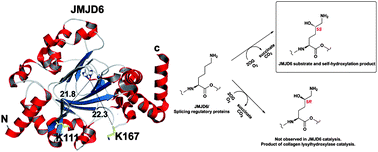Abstract
The

* Corresponding authors
a
Chemistry Research Laboratory, 12 Mansfield Rd., Oxford, United Kingdom
E-mail:
christopher.schofield@chem.ox.ac.uk, alexander.wolf@chem.ox.ac.uk
Fax: +44 (0)1865 285022
b Department of Pharmacognosy, Faculty of Pharmacy, Assiut University, Egypt
c Department of Proteomics, The Novo Nordisk Foundation Center for Protein Research, University of Copenhagen, Faculty of Health Sciences, Copenhagen, Denmark
d Department of Biology II, Ludwig-Maximilians-University, Munich, Großhaderner Str 2, Planegg-Martinsried, Germany
The

 Please wait while we load your content...
Something went wrong. Try again?
Please wait while we load your content...
Something went wrong. Try again?
M. Mantri, C. J. Webby, N. D. Loik, R. B. Hamed, M. L. Nielsen, M. A. McDonough, J. S. O. McCullagh, A. Böttger, C. J. Schofield and A. Wolf, Med. Chem. Commun., 2012, 3, 80 DOI: 10.1039/C1MD00225B
To request permission to reproduce material from this article, please go to the Copyright Clearance Center request page.
If you are an author contributing to an RSC publication, you do not need to request permission provided correct acknowledgement is given.
If you are the author of this article, you do not need to request permission to reproduce figures and diagrams provided correct acknowledgement is given. If you want to reproduce the whole article in a third-party publication (excluding your thesis/dissertation for which permission is not required) please go to the Copyright Clearance Center request page.
Read more about how to correctly acknowledge RSC content.
 Fetching data from CrossRef.
Fetching data from CrossRef.
This may take some time to load.
Loading related content
